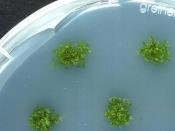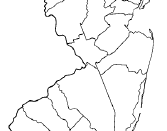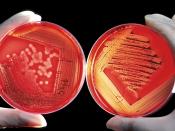Introduction
Total Viable Count is a quantitative idea about the presence of microorganisms such as bacteria, yeast and mold in a sample. It counts the number of colonies produced by a very dilute suspension of bacteria on an agar plate and to observe the differential staining behaviour of the living bacteria. This involves counting the colonies produced by viable cells under favourable growth conditions. Some techniques needed before the viable count, like pour plate method, spread plate method and most probable number method. The viable count is very specidic, as it represents the number of colony forming units (/g) or (/ml) of the sample.
B) VIABLE COUNTS
Two methods of getting viable counts are available
i. Spread plate method.
ii. Most probable number (MPN) method.
(i) Spread Plate Method (Lawn Culture)
Materials:
Dilution series prepared in (A)
Sterile 1ml pipette
6 nutrient agar (NA) plates
1 glass hockey stick
1 beaker of alcohol
Procedure
All steps should be done using aseptic technique
The culture labeled 10-8 was gently mixed.
0.1ml of this dilution was aseptically transferred onto the center of a NA plate.
Bend end of the glass spreader was dipped in alcohol, then it was sterilized by flaming and allowed to cool down.
The glass hockey stick was used to spread the sample over the surface of the plate. It was an even distribution.
This procedure was repeated using a second NA plate. These plates were labeled as 10-8. So, duplicated plate was counted.
Steps 1,2 and 3 was repeated for dilution 10-7 and 10-6 in order. 6 plates was prepared and 2 at each of the dilution 10-8, 10-7 and 10-6.
The plates were incubated at 32oC for about 2 days.
The number of colonies on the plate was counted. Ideally, the plate should have over 30-300 colonies,


